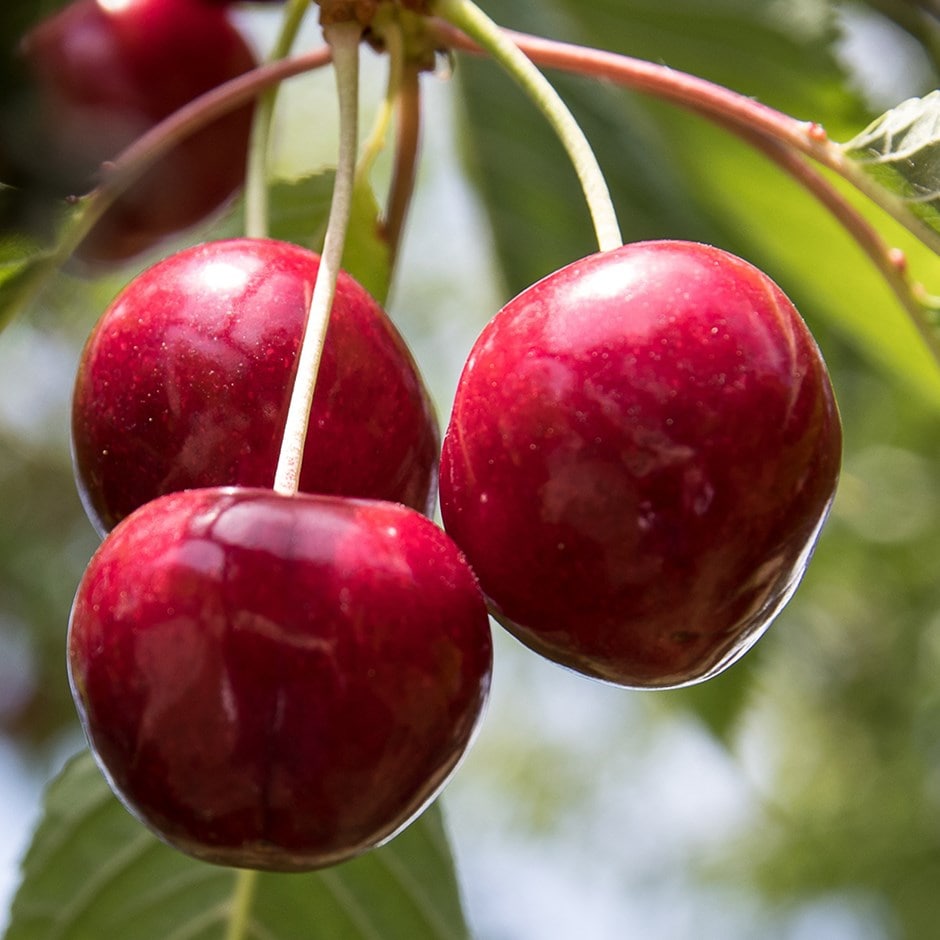cherry 'Colney'
sweet cherry (syn. Prunus avium Colney)
This plant is deciduous so it will lose all its leaves in autumn, then fresh new foliage appears again each spring.
- Position: full sun
- Soil: moderately fertile, moist, well-drained soil
- Rate of growth: average
- Flowering period: April to May
- Hardiness: fully hardy
This late-season dessert cherry variety produces abundant crops of large, shiny black fruit with sweet, dark red flesh. The fruit resists splitting and has a high sugar content for excellent flavour. White flowers are born in spring, popular with pollinating insects. Colt rootstock makes for a great free-standing tree for smaller gardens and is better for northern areas as it is less susceptible to damage from frost though, like all cherries, the ideal position for sweet cherries is deep, fertile, well-drained, slightly acidic soil in full sun. ‘Colney’ is not self-sterile, so will require a compatible pollination partner.
Pollination information: This cherry requires another variety of cherry nearby. Ideally this should come from the same pollination group 3, however it is possible to use one from group 2 or 4 as well. Good options include 'Stella' or 'Sweetheart'.
Pollination information: This cherry requires another variety of cherry nearby. Ideally this should come from the same pollination group 3, however it is possible to use one from group 2 or 4 as well. Good options include 'Stella' or 'Sweetheart'.
When planting your cherry tree, prepare a hole up to three times the diameter of its root system. Fork over the base of the pit in readiness, incorporating plenty of organic matter into the backfill and planting hole. Avoiding frozen and waterlogged soil, trees should be planted out and staked as soon as they arrive. If you've ordered a bare root tree, soak the roots in a bucket of water for half an hour prior to planting, or if this is not possible, they can be heeled in temporarily, covering their roots with soil, or potted up. Protect from cold, drying winds. Apply a balanced fertiliser in early spring to support growth and fruiting. Lightly prune in summer to reduce the risk of silver leaf and bacterial canker, to retain an open ‘goblet’ shape and remove any damaged, diseased or broken branches.

